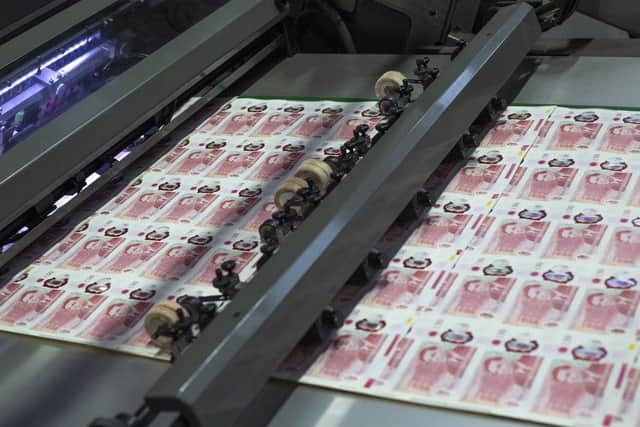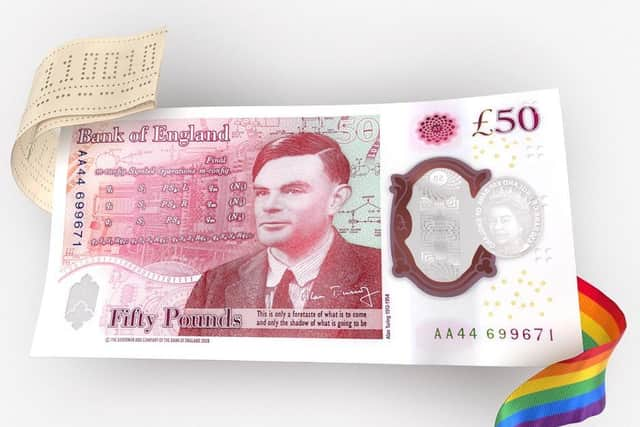First look at amazing new £50 note featuring Milton Keynes codebreaker Alan Turing
and live on Freeview channel 276
The new design of the next £50 note featuring famous Bletchley Park codebreaker Alan Turing has been revealed.
It will enter circulation on June 23, the birthday of the mathematician.
Advertisement
Hide AdAdvertisement
Hide AdIts the last UK banknote to made with sterner polymer rather than paper.


Bank of England officials are claiming it will be the most secure, indestructible piece of cash yet.
Turing became a wartime hero for his role intercepting German Naval messages by mastering the British Bombe machine, at Bletchley Park. He is credited with shortening World War Two and saving lives.
He also played a key role in the development of early computers at the National Physical Laboratory and the University of Manchester.
Advertisement
Hide AdAdvertisement
Hide AdHe was granted a posthumous pardon in 2013, regarding his 1952 conviction for gross indecency. His arrest related to an affair with a 19-year-old Manchester man, he was forced to take female hormones as an alternative to prison, as homosexual acts were not legalised in the UK until 1967.


He died at 41 and his death was ruled a suicide.
Governor Andrew Bailey said: "I’m delighted that our new £50 features one of Britain’s most important scientists, Alan Turing. Turing is best known for his codebreaking work at Bletchley Park, which helped end the Second World War.
"However in addition he was a leading mathematician, developmental biologist, and a pioneer in the field of computer science. He was also gay, and was treated appallingly as a result. By placing him on our new polymer £50 banknote, we are celebrating his achievements, and the values he symbolises."
The photo of Turing used was taken in 1951 by Elliott & Fry which is part of the Photographs Collection at the National Portrait Gallery. A table and mathematical formulae from Turing’s seminal 1936 paper “On Computable Numbers, with an application to the Entscheidungsproblem” makes up the background. The paper introduced the concept of a Turing machine as a thought experiment of how computers could operate.


Advertisement
Hide AdAdvertisement
Hide AdThe Automatic Computing Engine (ACE) Pilot Machine designed by Turing is considered to be one of the first electronic stored-program digital computers, and is referenced on the note. Look out for Technical drawings for the British Bombe, the machine specified by Turing and one of the primary tools used to break Enigma-enciphered messages.
Turing’s signature from the visitor’s book at Max Newman’s House in 1947 which is on display at Bletchley Park, will be seen on new £50 notes.
Turing’s birth date (23 June 1912) is shown in binary code, referencing the concept of a machine fed by binary tape, which featured in the Turing’s 1936 paper.
A quote from Alan Turing from an interview to The Times newspaper on 11 June 1949 is used, it says: “This is only a foretaste of what is to come, and only the shadow of what is going to be.”
Advertisement
Hide AdAdvertisement
Hide AdThere are also a series of security features, similar to other notes, including holograms, see-through windows - based partly on images of Bletchley Park - and foil patches.
Director of GCHQ Jeremy Fleming added: “Alan Turing’s appearance on the £50 note is a landmark moment in our history. Not only is it a celebration of his scientific genius which helped to shorten the war and influence the technology we still use today, it also confirms his status as one of the most iconic LGBT+ figures in the world. Turing was embraced for his brilliance and persecuted for being gay. His legacy is a reminder of the value of embracing all aspects of diversity, but also the work we still need to do to become truly inclusive.”